|
With the doors of PIVOT Pilates + Restorative Exercise in Union Square temporarily closed due to the Covid-19 pandemic, I've taken our name to heart and pivoted to creating videos. I even started a Youtube channel!
I've always been a little resistant to taking pictures and video at the studio. Clients aren't there to have their journey documented for the masses. Many studios stage their photos and videos, but it's just not something I wish to devote my time to do. When I'm not with clients, I prefer to spend my working hours studying the human body, honing my teaching skills, and mentoring junior instructors. And, to be completely honest, even though I don't spend much time on my daily appearance, the diva in me claimed there was NO WAY I was making a video without a lighting designer, stylist, and full glam squad. Alas, it's a whole new world now. So, armed with my iPhone and a cheap mount that someone else left behind in the studio, this Gen Xer started recording videos of herself doing my favorite sequences from Pilates and restorative exercise. Hair looks a little crazy, and my pedicure is months old. Full disclosure: one video didn't even make it to Youtube because my head was cut off for the entire 15 minute video. But I've pressed on, learning more each time. Eric Bergmann, one half of the excellent Bergmann Fitness team, just wrote a blog about sorting out what you might regret spending your valuable time on during the Covid-19 pandemic. Would you regret watching CNN non-stop for virus updates? Probably. Would you regret taking more time for self-care? Learning a new skill? Helping others? Probably not. So yes, I'm a little skittish about putting myself out there in the world wide web, all unscripted and with wild-looking bangs. But I am embracing it anyway. I know I won't regret it, especially if these videos help people keep moving during these quarantined times! After all, we're all exposing new aspects of ourselves right now, whether it's in office meetings held in our bedrooms, or videos shot without a glam squad. The good news? We're in this together. What are you embracing right now? I'd love to hear from you! *Yes, it's also a Bible verse
0 Comments
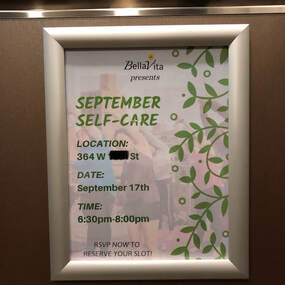 When I first saw the advertising for this event in the elevator of a West Village residential building, it made me laugh. It had been printed out on a paper with no background what so ever. I wondered what, exactly, would the attendees be doing? Unfortunately I didn't get a picture of it. The second time I was in this particular elevator, the sign had been reprinted with a faint background of people standing with one arm over their head. So perhaps something movement related, but still short on specifics. Self-care is anything that nourishes your physical, mental, and emotional being in a healthy way. But to be really effective, it can't just be anything. A huge part of self-care is the process of asking yourself how you feel and what YOU need to have more health and balance in your life. Reflecting on what you need to refuel is just as much self-care as the actual prioritizing and doing of the self-care. Another aspect of self-care is knowing what NOT to do. There are lots of things that can seem soothing but don't really nourish us in a healthy way. So while the basics of human self-care are universal... sleep, movement, nutrition, emotional support, safety, etc... being specific with what YOU need increases the quality of care you give yourself. At PIVOT Pilates + Restorative Exercise, we see all different types of people in varying ages and abilities. But we are very specific with what we offer: an hour of body awareness and exercise for better blood flow, coordination, and ease of movement, all in a calm, non-competitive atmosphere. So don’t settle for basic...get specific with your self-care needs! 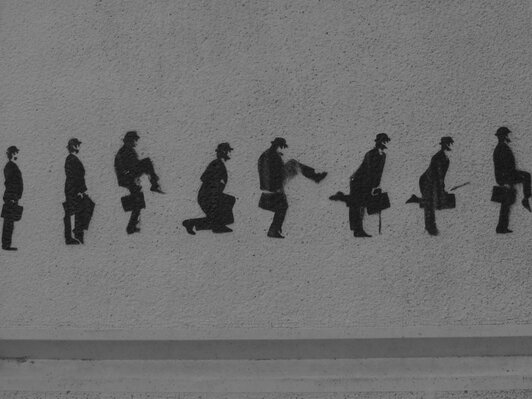 Many blame their age for loss of balance, coordination, and general ease of movement. But often I find the issue is more about how the brain is telling the body to move, and not the age, strength, or flexibility of the body itself. In other words, it’s more of a software matter, rather than the age of their hardware. We all have movement programs, aka motor patterns, set aside in the auto-pilot part of our brains. For instance, you probably no longer think to focus while tying your shoe laces. But very common occurrences can disrupt and subtly change your motor patterns. This can happen multiple times over the course of your life. Even if you workout in a gym everyday, these fragmented and re-organized movement patterns can add up to less coordinated movement, loss of balance, and uneven wear on your joints. Common Triggers to Movement Pattern Disruption: Previous Injury or Surgery: Injuries heal. However, bits of the compensations the brain organized to avoid the injury, like limping or using crutches, might remain in your brain’s auto-pilot program for “walk.” Chronic or Non-Specific Pain: Sometimes pain can be chronic, meaning the pain remains even after the injury itself has healed. Weeding out the compensations that help you avoid pain from those that might create more issues could be beneficial. Pregnancy: This one isn't so subtle! Mothers know that they were walking differently during the third and the post-birth “fourth trimester.” Athletic or Dance Training: Most sports have specialized and repetitive motions. When athletes stop or retire, they can hold on to these specialized motions even when they are no longer advantageous. Former Fashionistas: Your motor patterns change when wearing high heels, and might stick with you when making the switch to flats. Convalescing or a Sedentary Lifestyle: As everyday movements like walking, stair climbing, and overhead reaching become more foreign and challenging, the brain will deploy compensations to get whatever movement it can. High levels of Stress, Anxiety, or Depression: Transient moods are reflected in our posture and body language. But crisis can temporarily change our body awareness and proprioception. Those changes can help us get through the crisis, but long periods of stress allow for these changes to become habituated. The Good News The good news is you can change and improve your automatic patterns! Physical bodies are different, and everyone has their personal history of compensations. At PIVOT, we specialize in private sessions to help optimize your personal movement. Whether you workout everyday or shy away from movement due to arthritis or joint replacement, upgrading your movement software can help you restore balance, coordination, and ease of movement to your life. To book a Restorative Exercise session at our Union Square studio, click here. 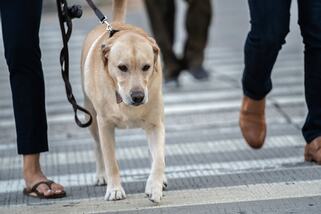 Photo Credit: Jeenah Moon for The New York Times Photo Credit: Jeenah Moon for The New York Times As a dog lover and owner, I didn't need to read this recent study demonstrating that dog owners often fulfill the recommended 150 minutes of moderate exercise per week just by walking their dog. But this study showed more than just that. The researchers found that the dog owners were also more physically active, even without their dog's company. Possibly another example of movement begets movement, or the flip side of "use it or lose it." Of course the article does responsibly point out that more than just the need of exercise should be considered before getting a dog. If pet ownership is too much responsibility, you can borrow a friend's dog or volunteer at a shelter. When needing a break from the pilates studio, I often walk to the dog park in Union Square for a little dog entertainment! Want to exercise even more with your dog? Check out these ideas from the dog experts at www.yourdogadvisor.com.  Photo by Gregory Pappas on Unsplash Photo by Gregory Pappas on Unsplash Yes, it hurts to lose sleep, as this NYT article states. But sometimes pain can keep you awake or cause a fitful sleep. If you have chronic pain, doing just the right amount of daily calibrated movement, like Restorative Exercise or Somatics, can lead to a better sleep. Better sleep can lead to decreased pain sensations and a natural analgesic reaction. Something to think about. Or, better yet, sleep on! 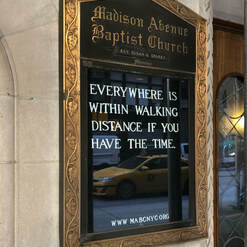 The people of NYC are blessed to have so many movement options available to them, especially in Manhattan. It's a walking city, and even riding the subway entails some walking and stairs. Most of us don't live on the ground floor, and often the workplace is several floors up. Yes, the rent is too damn high, but these are FREE EXERCISE opportunities! So what's the catch? Getting real with time management. Yes, you might need to make the time to walk and take the stairs. But, in reality, with traffic, train delays, and mid-century elevators, is walking and stair-climbing that much more time consuming? A few of my clients have joined me in ditching the twice weekly 45 minute cardio session. Instead, they walk to get to destinations instead of riding, and choose the stairs as much as possible. They report positive results. Lower body and back pain is reduced, and they have less tension in their upper body. ( lots of shoulder, neck, and jaw tension can happen on the bike and treadmill ) Their feet are tired at the end of the day, but their ankles are less swollen, digestion is better, and sleep comes more easily. I have yet to hear of anyone's doctor reporting a decline in heart health with this change, but I have heard of improvement! So take those movement opportunities, Manhattanites. We are blessed to have them! 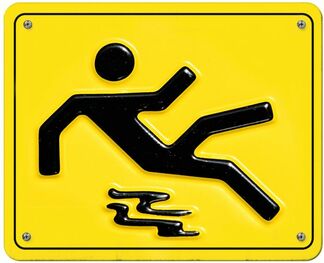 ILLUSTRATION BY BRYAN GEE (SOURCE IMAGES: ISTOCK ILLUSTRATION BY BRYAN GEE (SOURCE IMAGES: ISTOCK As this The Globe and Mail article states, people can be find themselves thinking about balance issues and fall prevention surprisingly early in life. Instead of touring the sidewalks and cobblestones of the world in their 50s and 60s, they stay close at home to avoid a trip and fall. And if diagnosed with Osteoporosis, being a "fall risk" is even more scary. But why are balance issues happening so early in life? Again we can blame sedentary lifestyles. Muscle atrophy can rob you of both strength and proprioception, which is the sense of your body in space. Joint stiffness can keep you from lifting your knee and foot high enough to completely clear different types of ground surfaces. Hip weakness reduces the amount of time you can safely support yourself on one leg. Painful bunions and hammer toes can diminish your ability to stay balanced on your feet. To keep enjoying life in all of your years, it's important to focus on more than just cardiovascular health. A physical routine that moves your full body in many different planes of motion helps maintain the necessary strength, balance, and coordination to avoid trips and falls. At PIVOT, we combine Pilates, Restorative Exercise, and gait training to keep our clients on their feet and traveling the world! 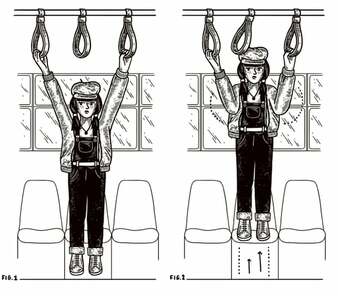 Artist Lauren Boglio for The Guardian Artist Lauren Boglio for The Guardian Just finished the latest The Guardian Long Read: Why Exercise Alone Won't Save Us. If you've worked with me for any length of time, most of it should already sound familiar! For everyone else, here is my TL;DR: For optimal health, the body needs to be in fairly constant, varying motion. At the cellular level, this provides oxygenated blood flow to all parts of our body, and the “clean-up crew” lymph circulating. However, technology and convenience are robbing us of the movement we evolved with, and our overall health is suffering because of it. Doing intense exercise 2-3 times a week has benefits, but in itself it doesn't come close to the slow to moderate and varying movement our bodies rely on for optimal health. In addition, intense workouts combined with an otherwise sedentary lifestyle might leave your joints feeling aches and pains too early in life, discouraging you from further movement. So, attempting to squish all the movement you need for optimal health into one or two intense sessions a week isn't the best strategy. If you want to elongate your life and enjoy the extra years, you have to keep moving. Walking, squatting, stair climbing, pushing and pulling. Take every opportunity you have to walk. Take the stairs. Twist and reach for things. Get down on the floor and get back up. Change sitting positions often. When you need rest you rest, and then move again. At PIVOT, our expertise is in evaluating your movement patterns, introducing movements you lack, and retraining patterns that no longer serve you. Our aim is to optimize your movement so you can continue moving....freely and independently....for a long time! 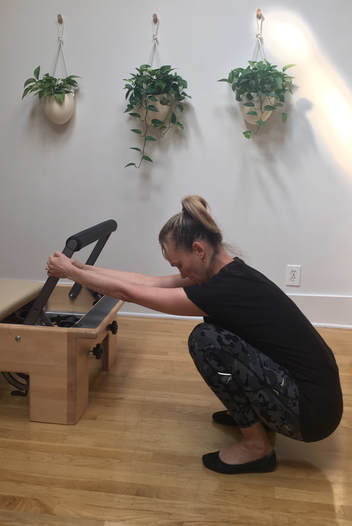 Often clients tell me their backs can feel tight, stiff, or achy after walking more than usual, and they want to know what to do about it! My (not so) secret to easing the backache that comes with long walks is the 10 second squat sit. The squat sit unloads your spine and gives the glute and back muscles a gentle stretch. Upon standing, your glute and core muscles concentrically contract, readying them for another walk about. And think about it: If you were a hunter/gatherer, you'd probably drop down into a squat once or twice a day when nature called. Now it's NOT always good to look to the past to make health choices for today. (please keep your vaccines up to date!) But our evolutionary history of walking proves to still be a healthful choice for modern humans today, and I believe the 10 second squat sit is another human movement best done daily, even though there are plenty of chairs around. If you have tight ankles and hips, you might need to hold on to something in front of you. Or, go for the "I'm tying my shoe" squat with one heel down at a time. Those with uneven knee flexion ranges may fair better with a few cat/cows while on all fours.  According to a piece on NPR’s morning edition called Words Matter When Talking About Pain with Your Doctor, physicians are moving away from using the simple zero to ten pain scale to gauge a patient’s current state of pain. Doctors have found that routinely asking patients to use words to describe both pain levels and their challenges allows for more context and patient engagement, leading to more effective treatment plans and better results. I believe the same is true when working with your Pilates or movement instructor. That’s why I ask my clients so many questions before, during, and after our sessions! Your answers help me make programming decisions on what today’s lesson should entail and the best approach. And, just as importantly, my Q & A helps to increase your “attention muscle.” Your ability to notice and express what you feel and our subsequent conversation can help you to discern and differentiate those sensations. These important body-awareness skills empower you to work with your body, instead of against it. |
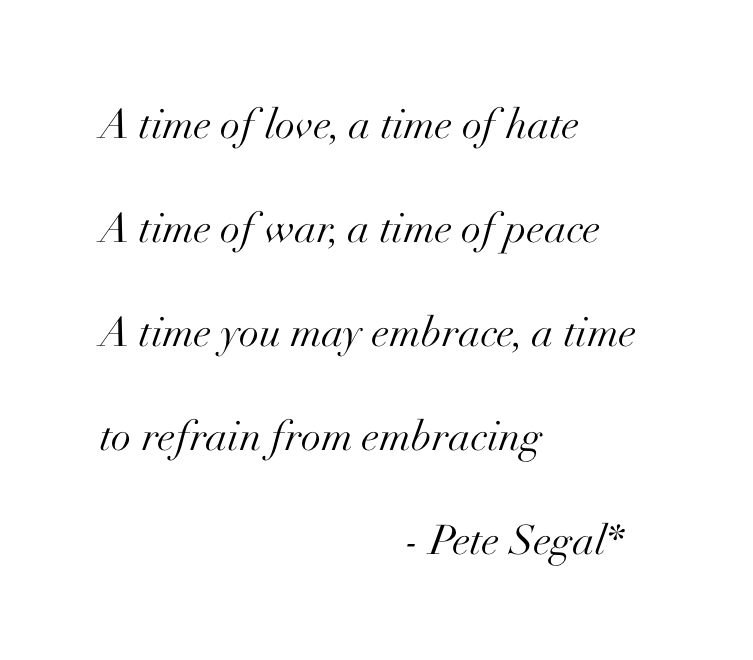
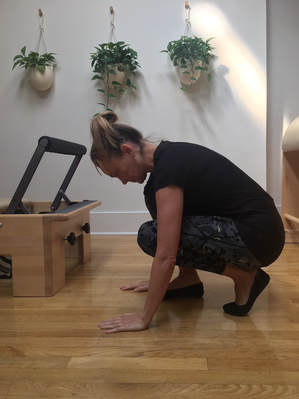
 RSS Feed
RSS Feed